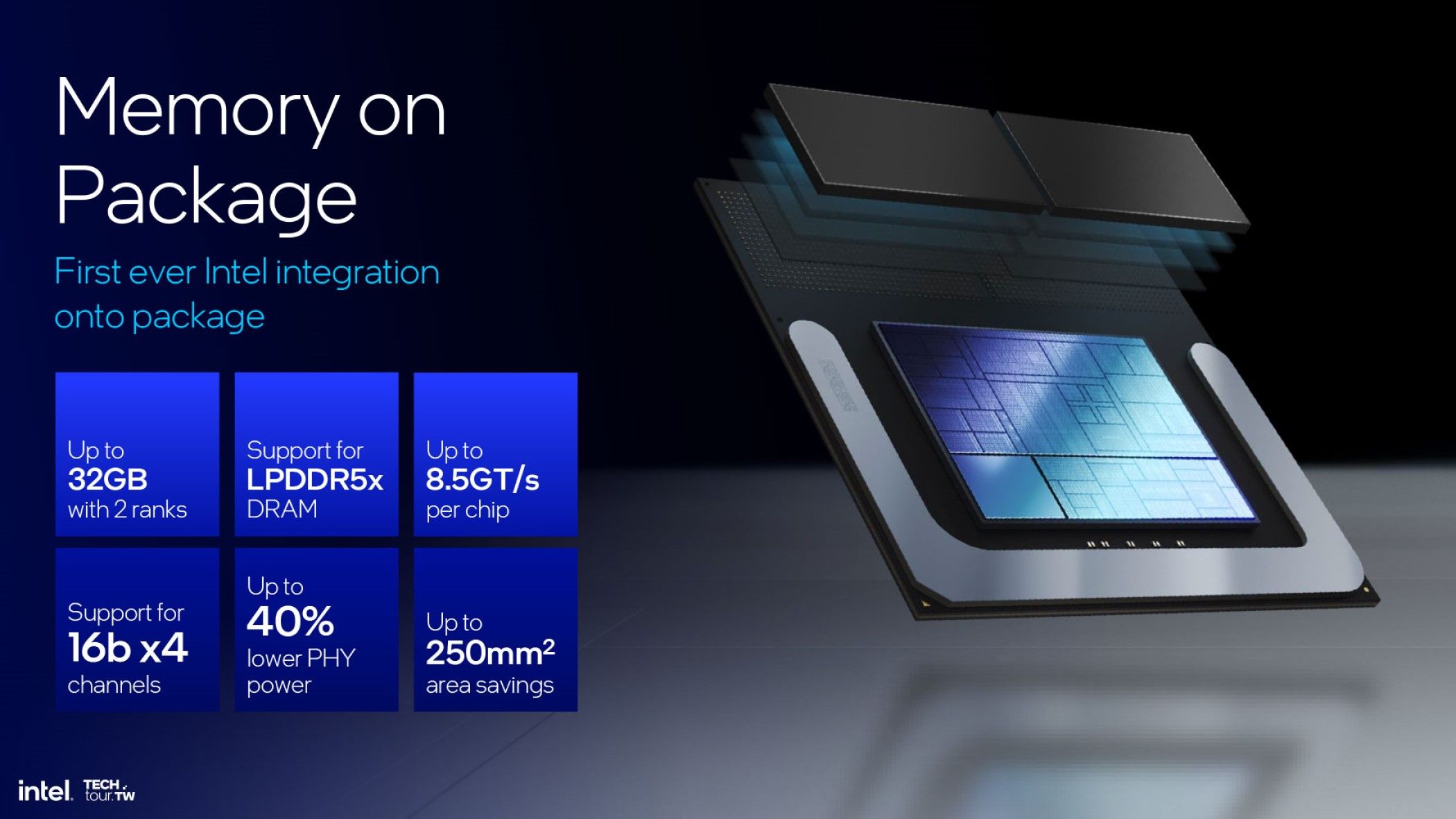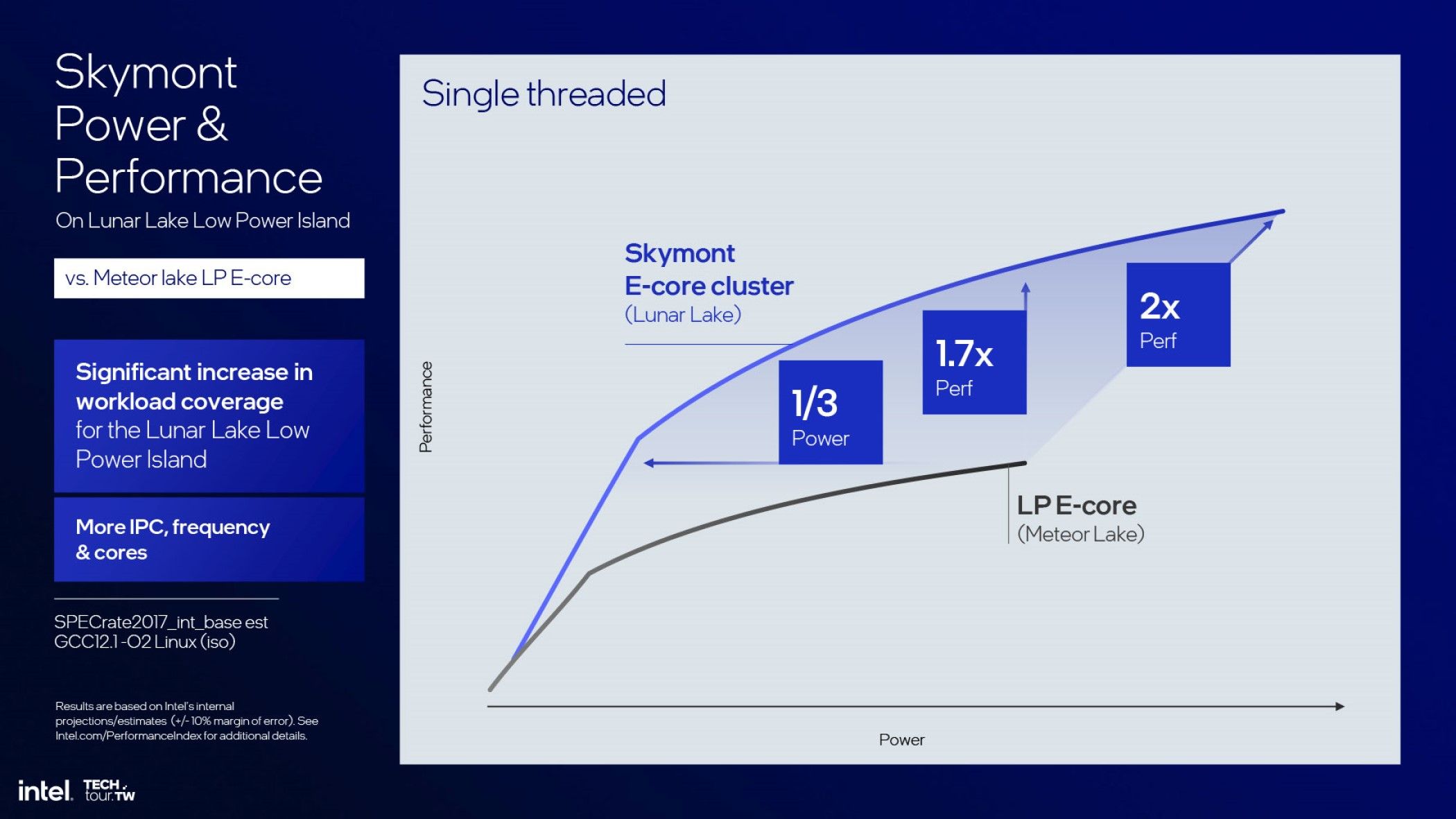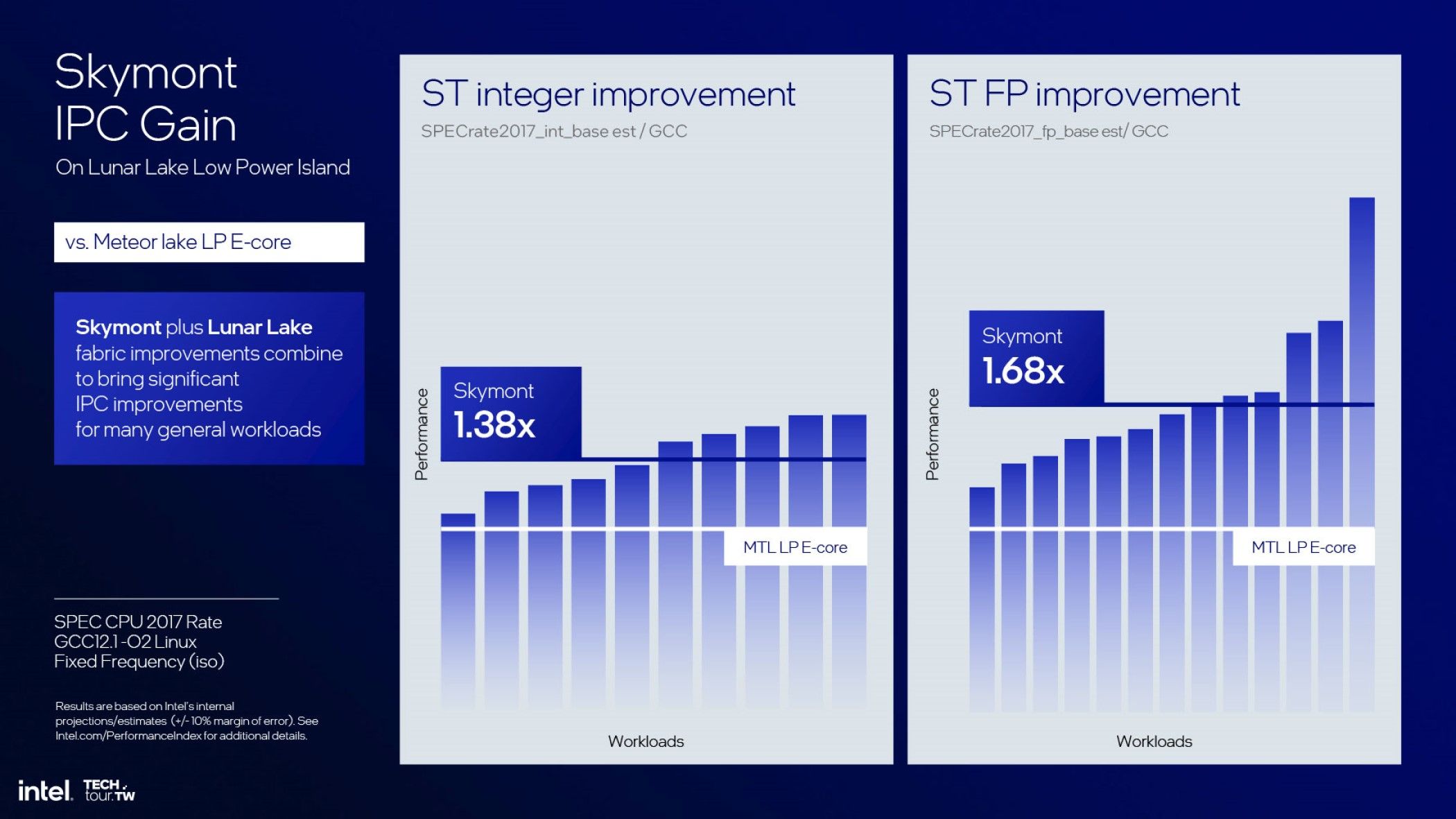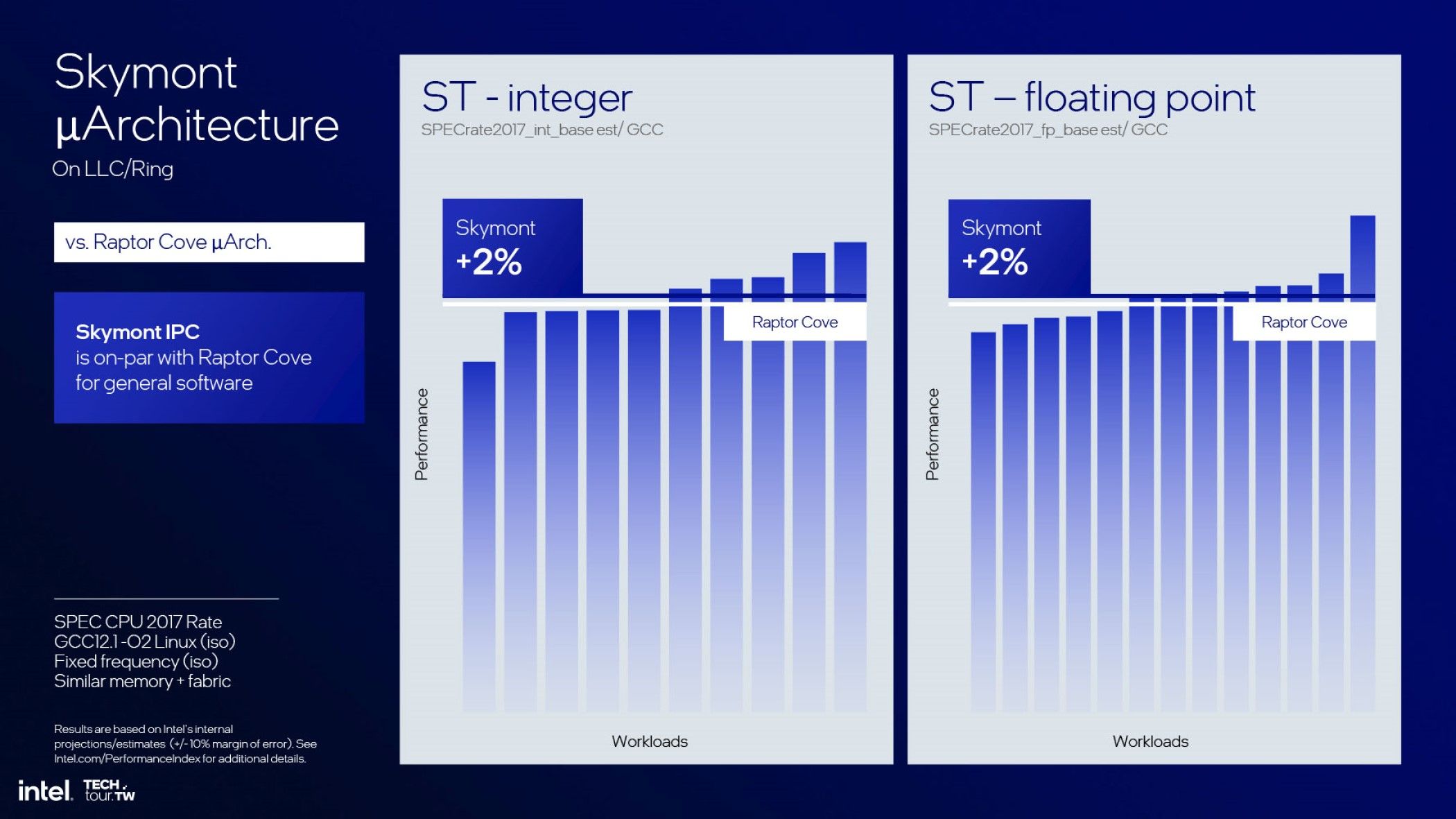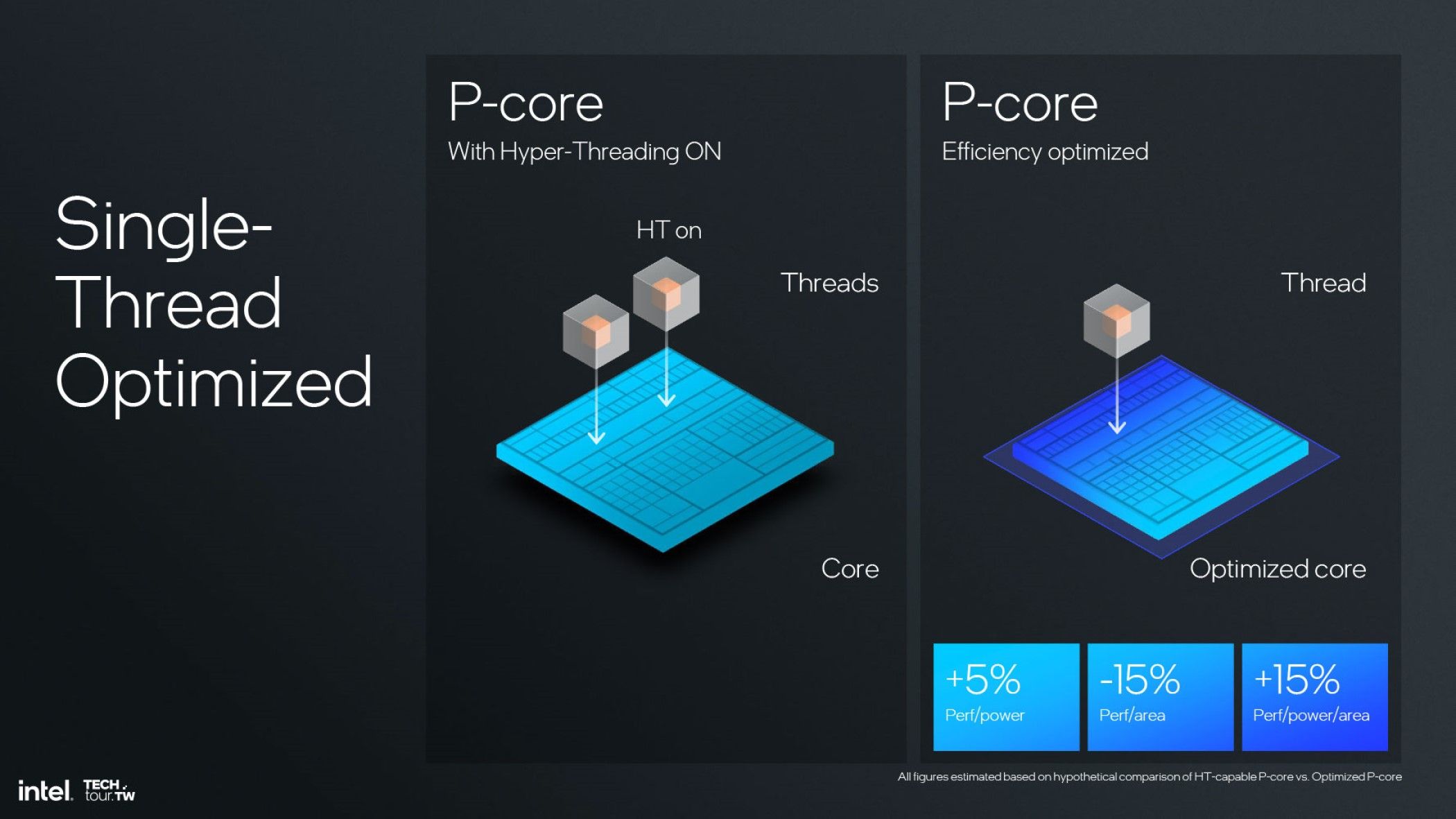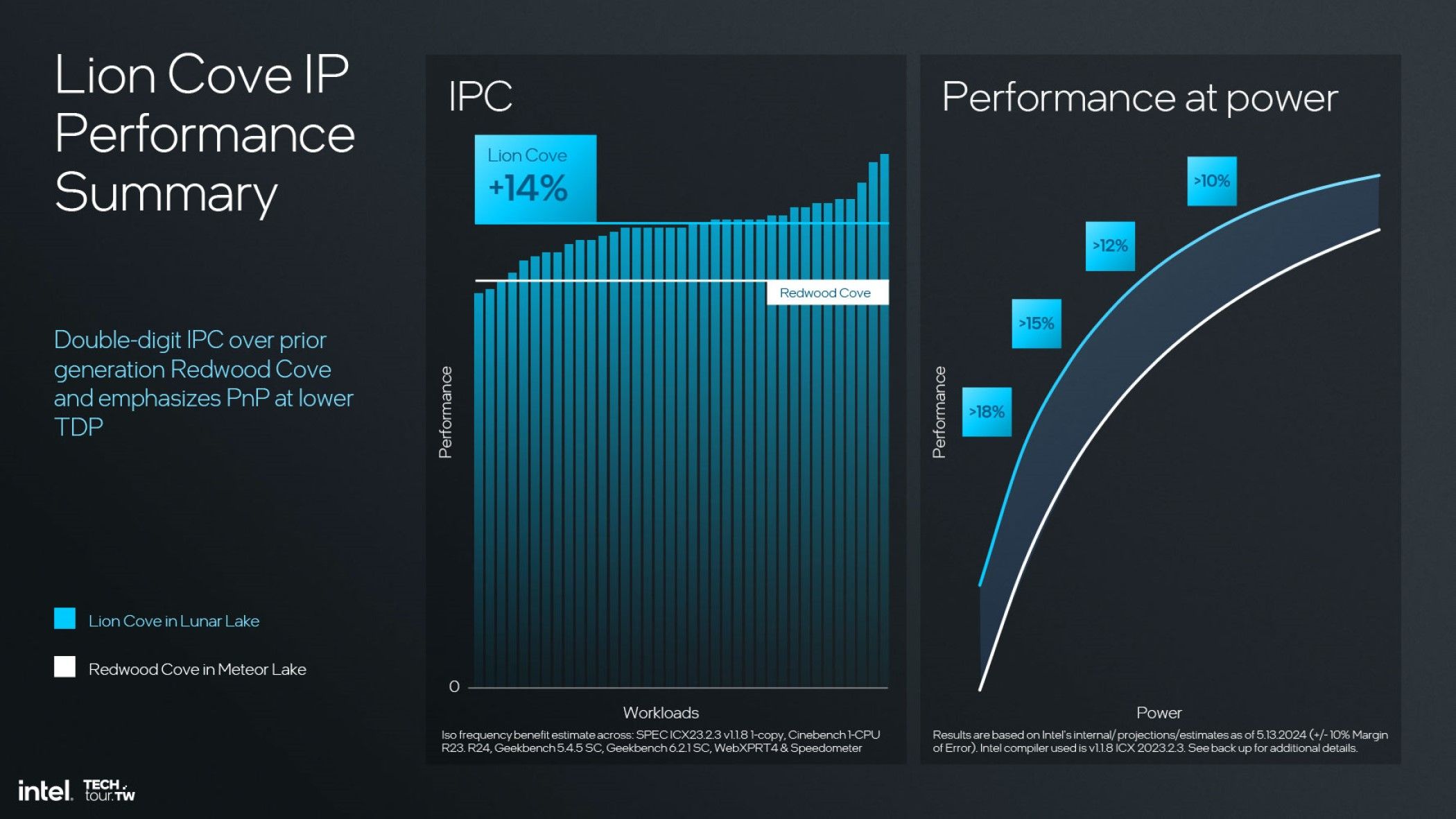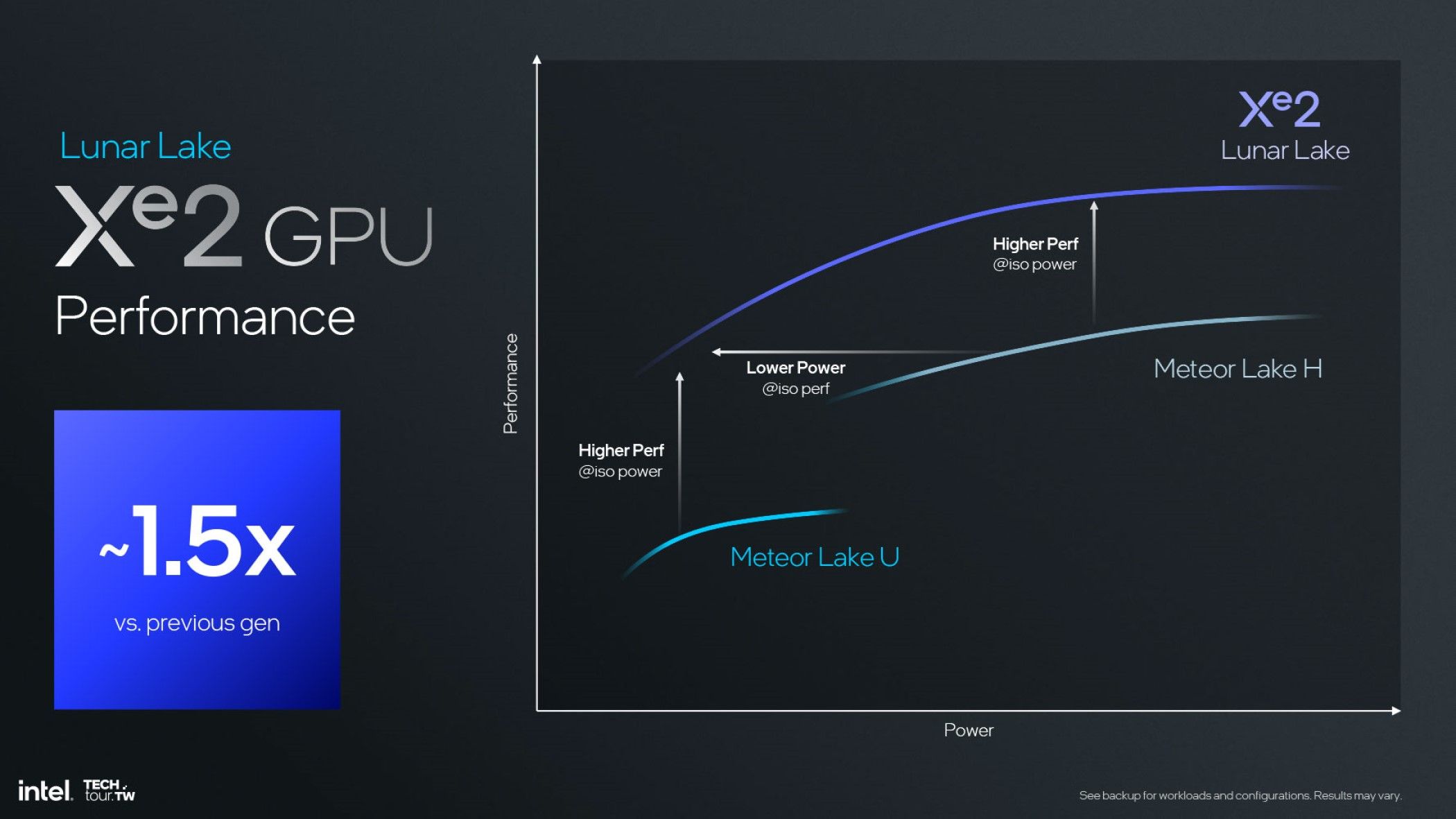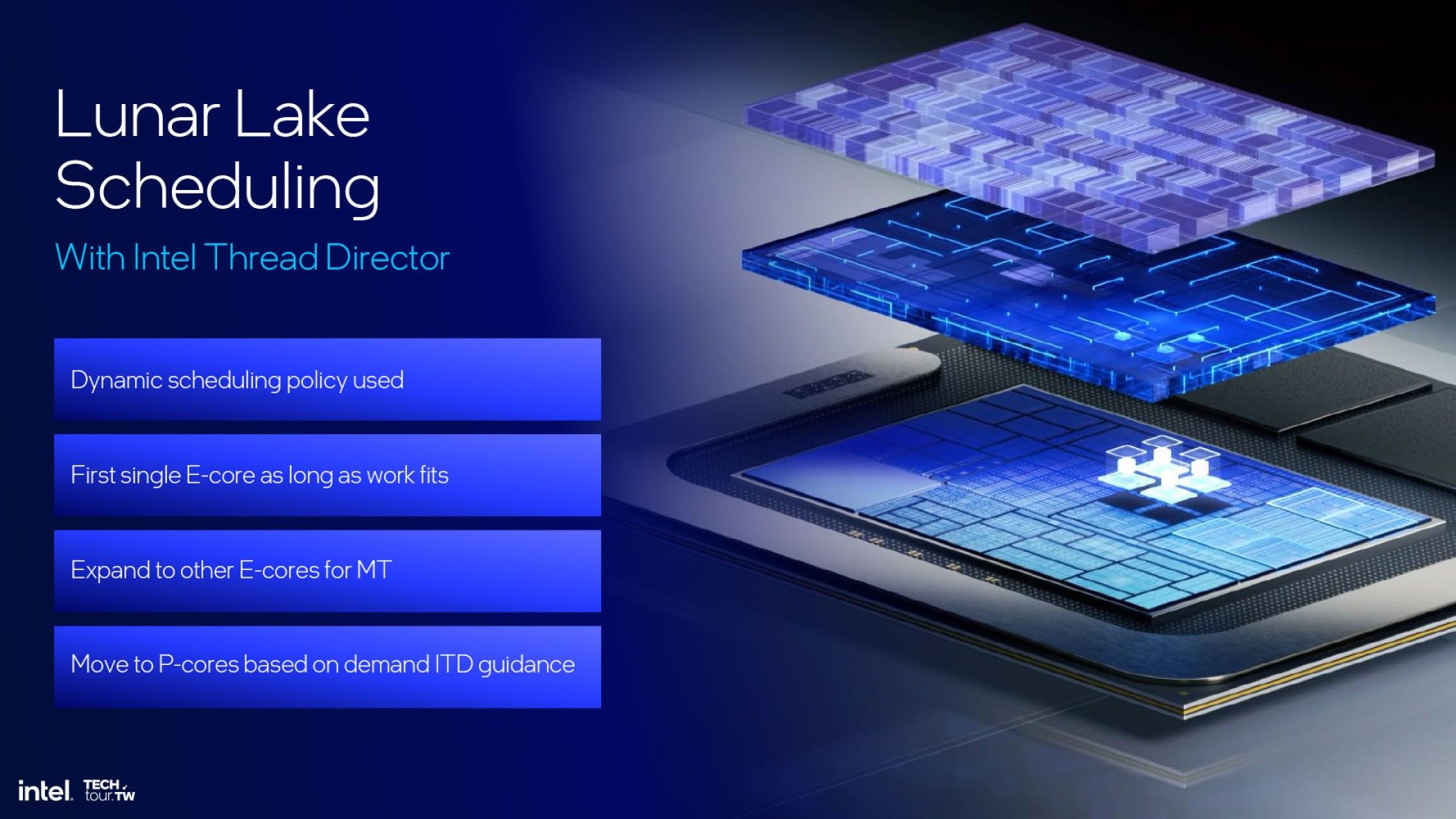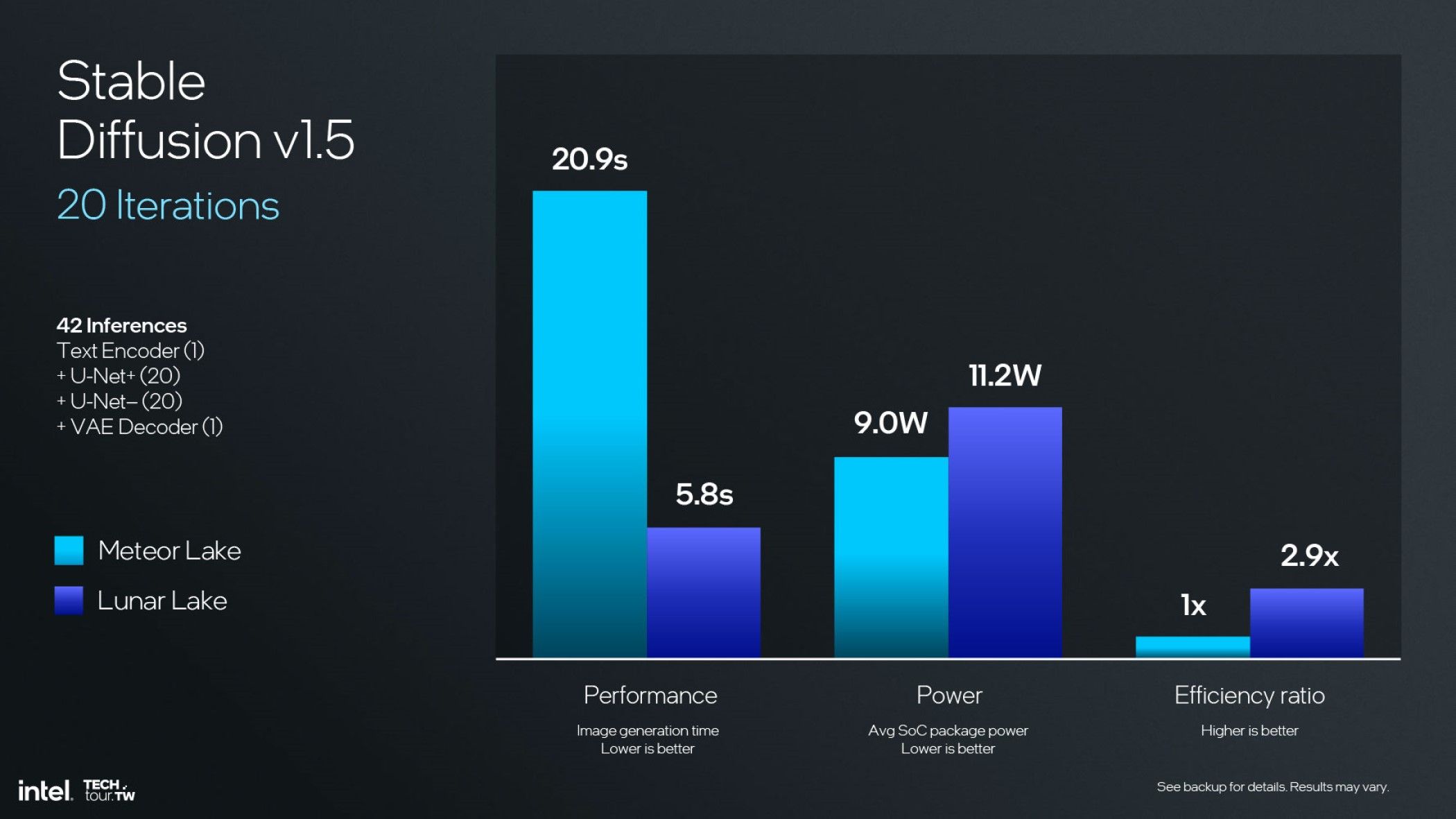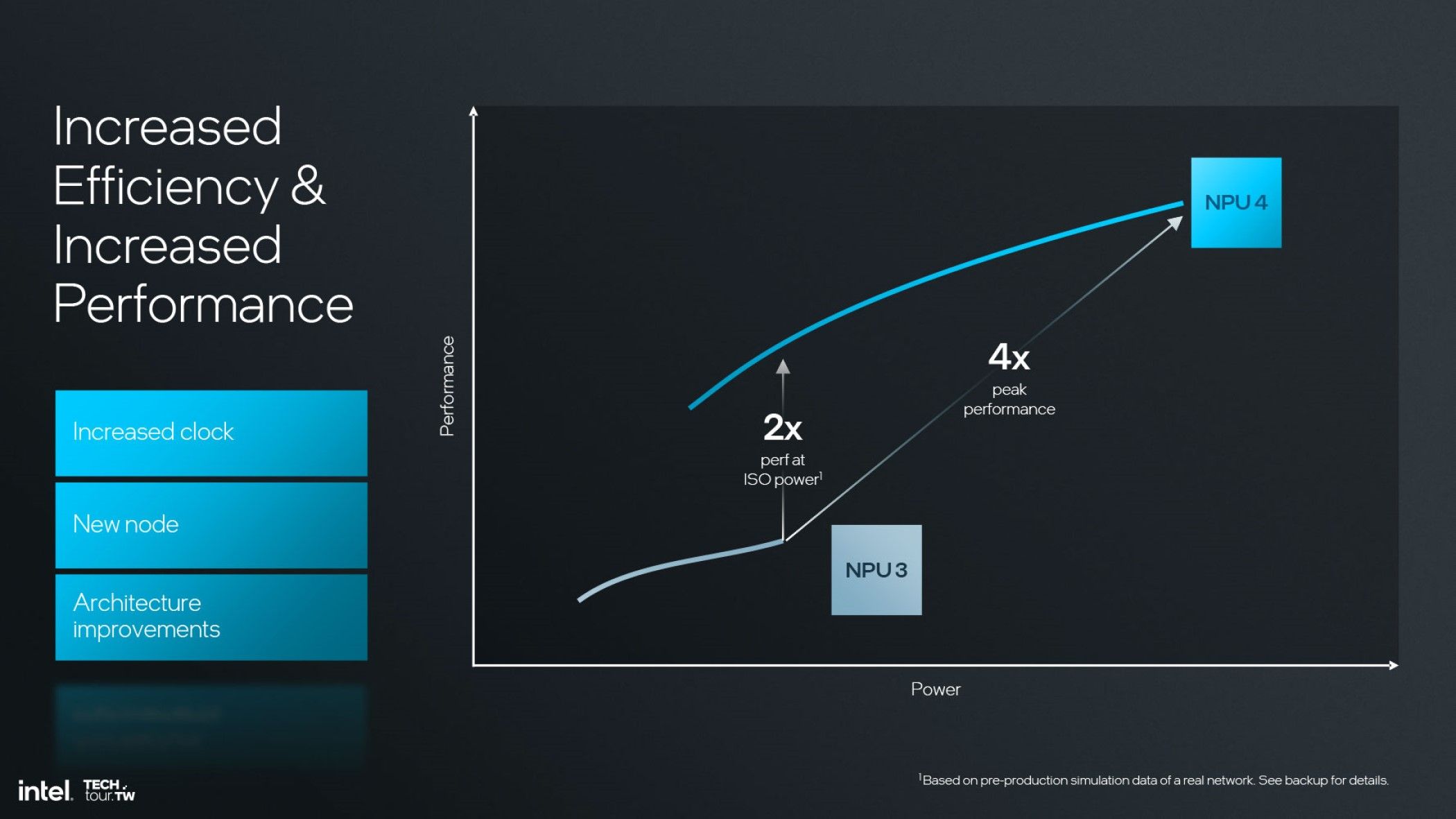Key Takeaways
- Lunar Lake CPUs feature on-package memory for improved power efficiency, space-saving, and fast performance.
- New E-cores offer up to 68% performance increase while P-cores ditch Hyper-Threading for enhanced power efficiency.
- Lunar Lake boasts a much-improved gaming performance, AutoTDP, power efficiency, and NPU performance rivaling Qualcomm.
Intel’s upcoming mobile CPU architecture, code-named “Lunar Lake,” packs a smorgasbord of upgrades over the previous generation of Intel’s mobile CPUs, known as “Meteor Lake.” Here’s why I can’t wait to see Lunar Lake CPUs in action.
On-Package Memory
On the surface, adding memory chips just above the CPU die is the most significant change the Lunar Lake architecture brings over its predecessors. The memory used is LPDDR5X-8500, which is pretty fast on its own.
But then you’re also getting higher bandwidth and lower latency thanks to the memory being physically right next to the CPU, which also results in improved power efficiency. The end product also uses less physical space, making for a massive overhaul over previous Intel CPU architectures.
The on-package memory design includes either 16GB or 32GB of memory, which isn’t that much but should be more than enough for thin and light laptops, which Lunar Lake mainly targets.
This amount of fast on-package memory should also make Lunar Lake laptops attractive machines for local AI workloads, a department where Apple Silicon Macs currently reign supreme.
New E-cores and the Removal of Hyper-Threading on P-cores
While the on-package memory appears to be the biggest improvement over Meteor Lake and older CPU architectures at first glance, the real star of the show is the new E-core architecture, code-named “Skymount.”
The new E-cores bring immense performance improvements compared to the previous generation of E-cores (known as “Crestmont”), as well as the previous generation of performance cores.
Compared to Meteor Lake E-cores, Skymount E-cores offer up to 68% performance increase combined with laudable improvements in power efficiency.
Intel has so much faith in the new E-cores that it even compares them to the previous generation of performance cores, known as “Raptor Cove.” The new E-cores win the clash while using noticeably less power. This is huge and shows that Intel is serious about Lunar Lakes’ performance and power efficiency advancements.
As for the Lunar Lake P-cores, the new Lion Cove design ditches Hyper-Threading in favor of power optimization and die-area savings.
Combined with other optimizations, the end result is a 14% performance increase over the previous generation of P-cores combined with respectable power efficiency improvements.
The efficient E-cores will do most of the work on Lunar Lake CPUs with the P-cores called only when needed, during genuinely heavy workloads that aren’t happening that often on thin and light notebooks.
In other words, the E-cores reign supreme on Lunar Lake, which means lower power usage for a level of performance that’s quite close to what we got on Meteor Lake. And when you need that extra performance boost, you’ve got the new P-cores that pack extra performance at the cost of slurping more juice.
Much Improved Gaming Performance Over Meteor Lake
Intel’s next-generation GPU architecture, Xe2 “Battlemage,” will debut on Lunar Lake CPUs. It, too, packs a lot of upgrades.
Concerning raw performance, we’re getting a ~50% uptick in gaming performance compared to the iGPUs found in the first generation of Intel Core Ultra CPUs.
The new iGPU design includes ray tracing support, full DirectX 12 Ultimate support, and AV1 hardware acceleration support. We’re also getting full HDMI 2.1 and DisplayPort 2.1 support, the latter of which we ought to see more and more in upcoming monitors.
While Meteor Lake gaming handhelds, such as the MSI Claw, are okay with regard to their gaming performance, they are clearly behind AMD-powered handhelds, and their power efficiency is atrocious. This time, the Battlemage GPU could indeed compete with AMD’s upcoming RDNA 3.5 iGPU, which can be found in the forthcoming “Strix Point” APUs.
I’d love to see Intel challenge AMD in the PC gaming handheld space. Considering the praiseworthy gaming performance improvement over “Alchemist,” coupled with powerful E-cores and lots of power optimizations, Lunar Lake gaming handhelds could end up being a proper competition to AMD-powered handhelds.
AutoTDP That Actually Works
A small part of the new Battlemage iGPU is a feature called AutoTDP. The feature automatically adjusts the power used by the iGPU based on the target frame rate. For example, if you limit the frame rate to 60fps, the iGPU will use more power for heavy scenes and less during less demanding sections.
As of this writing, the Steam Deck is the only PC gaming handheld with a working AutoTDP feature. Steam Deck’s AutoTDP is one of the reasons why Valve’s handheld is so power efficient. Windows handhelds, on the other hand, all have static power profiles, meaning they use more power when that power isn’t actually needed, leading to worse power efficiency.
While we’ve got a couple AutoTDP solutions in third-party PC handheld apps such as Handheld Companion, they are far from perfect. While they do work, they also induce massive stuttering when the TDP switches up or down, making for a frustrating gaming experience.
I used Handheld Companion’s AutoTDP feature for a few weeks on my ROG Ally, but I stopped using it because the stuttering was really jarring.
Well, it looks like Intel has decided to bring AutoTDP to its Lunar Lake CPUs. If you check out an early Lunar Lake demo, courtesy of the PC World YouTube channel, you can see that the Lunar Lake iGPU dynamically shifts the power envelope based on the scene’s complexity. These shifts are as high as 5W and show that AutoTDP works well on Lunar Lake.
AutoTDP, combined with impressive power efficiency and (hopefully) matured Battlemage GPU drivers, should make Lunar Lake gaming handhelds finally competitive in the handheld gaming PC space.
Improved Power Efficiency That Should Lead To Longer Battery Life
Aside from the impressive strides Intel has made regarding E-cores, greatly improved power efficiency over Meteor Lake is Lunar Lake’s second-biggest selling point.
First, we’ve got the on-package memory that uses less power than soldered RAM as well as SO-DIMM and CAMM2 memory sticks. Next, there’s the lower power usage of the Lion Cove P-cores, thanks to various optimizations and the removal of Hyper-Threading. Then we’ve got the new E-cores that offer almost the same performance as Meteor Lake P-cores while using much less power.
The new Battlemage iGPU is yet another link in the power efficiency improvement chain. The final piece of the equation is the improved Thread Director, which now reserves work exclusively for E-cores unless the workload is so heavy that it absolutely needs power-hungry P-cores.
The final product is a mobile CPU architecture that should finally bring the power efficiency improvements Intel promised with Meteor Lake. While Meteor Lake proved to be a dud concerning power efficiency, with many laptops coming with the same or slightly better battery life compared to Raptor Lake laptops, Lunar Lake laptops should offer battery life comparable to Apple Silicon Macs and Snapdragon X-powered Windows on ARM laptops.
A Next-Gen NPU Rivaling The Qualcomm Snapdragon X Elite
Last but not least, we’ve got the second-generation neural processing unit (NPU) that fulfills Microsoft’s 40 TOPS of AI performance requirement for the CoPilot+ PC certification.
In fact, with 48 TOPS of AI performance, the new NPU is faster than the one found in Snapdragon X SoCs, which achieves 45 TOPS of performance.
While the new NPU uses a bit more power than the Meteor Lake one, its performance boost makes it much more efficient than its predecessor.
At the end of the day, Intel Lunar Lake is one of the most exciting mobile CPU architectures I’ve seen in a while. It’s a complete design overhaul compared to Meteor Lake, and I can’t wait to see the first devices powered by Lunar Lake CPUs. If everything goes according to plan, Intel ought to give Apple, Qualcomm, and AMD a run for their money.


